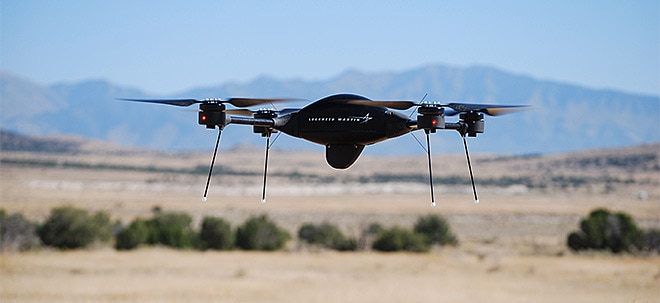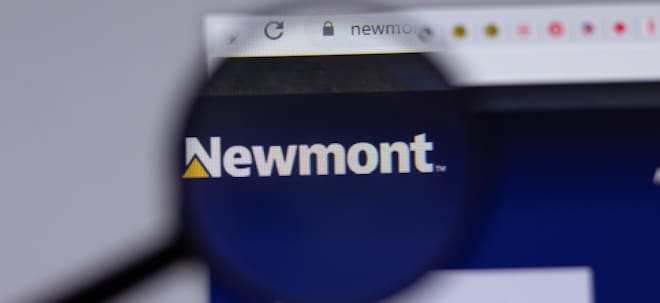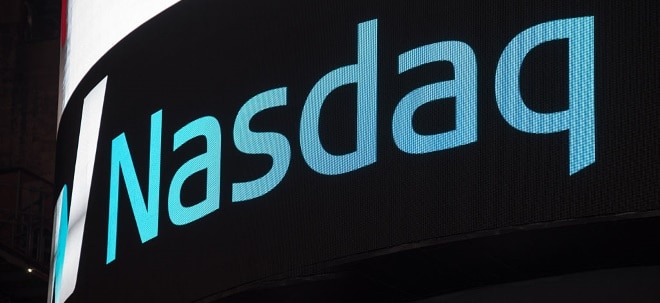Mastercard vs. PayPal: Which Payments Innovator is the Better Buy Now?
Werte in diesem Artikel
Mastercard Incorporated MA and PayPal Holdings, Inc. PYPL are two giants that are reshaping digital transactions across the globe. Mastercard operates one of the world’s largest card networks, facilitating seamless payments through banks, fintechs and merchants. Meanwhile, PayPal has long been a disruptor, helping usher in online payments and peer-to-peer transfers before fintech was even a buzzword.Both companies continue to ride the digital payments megatrend, expanding internationally and investing in newer rails like crypto, contactless, and embedded finance. Yet, while Mastercard thrives on its B2B infrastructure and partnerships with issuers, PayPal has built a direct-to-consumer ecosystem and boasts an enviable scale in merchant checkout. Given recent earnings trends, strategic pivots and the changing payments landscape, it’s a good time to ask: which stock is better positioned for an upside now? Let’s dive in to compare Mastercard and PayPal on multiple fronts to find the answer.The Case for MastercardMastercard, with a valuation of $509.4 billion, continues to be a dominant player in global payments, posting solid top-line growth on the back of strong cross-border volume and increased spending across debit and credit categories. In Q1 2025, net revenues rose 14% year over year to $7.3 billion, as gross dollar volume and switched transactions both saw healthy increases. Travel-related spending, a key tailwind for Mastercard, remains elevated amid global reopening trends.Mastercard Incorporated Price, Consensus and EPS Surprise Mastercard Incorporated price-consensus-eps-surprise-chart | Mastercard Incorporated QuoteThe company’s core moat is built around its four-party model and ability to scale a secure, compliant payments infrastructure globally. It has been proactive in innovation and tapping into open banking, real-time payments and fintech partnerships. Its acquisition of Recorded Future for $2.65 billion and investments in tokenization and AI fraud prevention highlight its long-term focus on staying relevant. Mastercard is also leaning into embedded finance and B2B payment rails, areas it believes will generate faster growth in the coming years.Still, Mastercard's fortunes are heavily tied to consumer and corporate spending patterns. Its revenues remain largely transaction-fee based, which can face pressure in downturns. Additionally, the increasing popularity of alternative payment methods like BNPL, digital wallets, and account-to-account transfers presents longer-term threats to the traditional card model. As more fintechs bypass card networks, Mastercard must compete not just with Visa, but a sprawling field of tech-first disruptors.Moreover, Mastercard’s growth is stabilizing compared to the faster acceleration seen in younger digital-first platforms. Despite technological investment, MA still relies on intermediaries like banks and acquirers, leaving it one step removed from the end-user experience, a key difference in today’s customer-centric digital economy.The Case for PayPalPayPal, with a market cap of $73.9 billion, is undergoing a necessary transformation, and early signs suggest it is working. The company delivered Q1 2025 revenue of $7.79 billion. Total payment volume rose 4% on a forex-neutral basisto $417.2 billion, while transaction margin in dollar terms was $3.7 billion, which grew more than 7%. Importantly, PayPal is driving cost efficiencies and sharper product focus to reinvigorate the business.PayPal Holdings, Inc. Price, Consensus and EPS Surprise PayPal Holdings, Inc. price-consensus-eps-surprise-chart | PayPal Holdings, Inc. QuotePayPal operates on a direct-to-consumer and direct-to-merchant model, giving it greater control over the user experience. Its two-sided network, including Venmo and Braintree, allows it to extract more data, build loyalty tools, and offer embedded financing and credit products. It is pushing forward with innovations in AI-driven checkout, merchant loyalty integrations and tokenized ID, positioning itself as more than just a button at checkout.While PayPal faces intense competition from Affirm, Blockand others, it retains enviable scale and a massive install base of over 436 millionactive accounts. It is also rationalizing its cost structure, with operating margins expected to improve meaningfully in the coming days. Meanwhile, Venmo remains a cultural staple for peer-to-peer payments among younger demographics, and Braintree continues gaining share among enterprise clients, thanks to its strong focus on developer-friendly tools.Compared to Mastercard, PayPal is earlier in its turnaround story, but that also gives it a steeper potential upside. It is better positioned in direct commerce and mobile-native experiences. PayPal’s long-term debt to capital of 36.1% is significantly lower than Mastercard’s 73.7%, indicating stronger financial flexibility and lower debt dependency.Price Performance ComparisonOver the past three months, PayPal has surged 17.4%, reflecting improving investor sentiment and renewed confidence in its turnaround. In contrast, Mastercard has gained a more modest 5.4%, lagging behind both PayPal and the broader S&P 500’s 14.4% rally. While Mastercard trades just 5.5% below its 52-week high of $594.71, PayPal remains 18.2% off its peak of $93.66, indicating more potential upside.3-Month Price Performance – MA, PYPL & S&P 500 Image Source: Zacks Investment ResearchValuation: MA vs. PYPLMastercard trades at a premium, with a forward P/E of 32.05X. PayPal, meanwhile, is valued at just 14.14X forward earnings, a steep discount for a company of its scale and potential. As PayPal delivers on its restructuring plan, this valuation gap offers notable upside for investors willing to stomach a bit of volatility. MA currently carries a Value Score of D, while PYPL carries a Value Score of A. Image Source: Zacks Investment ResearchHow Do Zacks Estimates Compare for MA & PYPL?The Zacks Consensus Estimate for Mastercard’s 2025 sales and EPS is pegged at $31.96 billion and $16.04, a 13.5% and 9.9% year-over-year growth, respectively. Similarly, the estimates for PayPal’s current year sales and EPS are pegged at $32.72 billion and $5.09, implying 2.9% and 9.5% year-over-year jumps, respectively. Both stocks’ EPS estimates have witnessed four upward revisions over the past 60 days, against no movement in the opposite direction.ConclusionMastercard remains a high-quality, consistent performer in the payments space, but its growth is steady rather than explosive. PayPal, on the other hand, is a turnaround play with much more upside baked into its improving fundamentals. With improving margins, accelerating innovation, and a significantly cheaper valuation, PayPal edges out Mastercard, even though both companies currently carry a Zacks Rank #2 (Buy) each.You can see the complete list of today’s Zacks #1 Rank (Strong Buy) stocks here.7 Best Stocks for the Next 30 DaysJust released: Experts distill 7 elite stocks from the current list of 220 Zacks Rank #1 Strong Buys. They deem these tickers "Most Likely for Early Price Pops."Since 1988, the full list has beaten the market more than 2X over with an average gain of +23.5% per year. So be sure to give these hand picked 7 your immediate attention. See them now >>Want the latest recommendations from Zacks Investment Research? Today, you can download 7 Best Stocks for the Next 30 Days. Click to get this free report Mastercard Incorporated (MA): Free Stock Analysis Report PayPal Holdings, Inc. (PYPL): Free Stock Analysis ReportThis article originally published on Zacks Investment Research (zacks.com).Zacks Investment ResearchWeiter zum vollständigen Artikel bei Zacks
Übrigens: eBay und andere US-Aktien sind bei finanzen.net ZERO sogar bis 23 Uhr handelbar (ohne Ordergebühren, zzgl. Spreads). Jetzt kostenlos Depot eröffnen und als Geschenk eine Gratisaktie erhalten.
Ausgewählte Hebelprodukte auf eBay
Mit Knock-outs können spekulative Anleger überproportional an Kursbewegungen partizipieren. Wählen Sie einfach den gewünschten Hebel und wir zeigen Ihnen passende Open-End Produkte auf eBay
Der Hebel muss zwischen 2 und 20 liegen
| Name | Hebel | KO | Emittent |
|---|
| Name | Hebel | KO | Emittent |
|---|
Quelle: Zacks
Nachrichten zu PayPal Inc
Analysen zu PayPal Inc
| Datum | Rating | Analyst | |
|---|---|---|---|
| 12.02.2021 | PayPal Outperform | Credit Suisse Group | |
| 25.06.2020 | PayPal buy | Joh. Berenberg, Gossler & Co. KG (Berenberg Bank) | |
| 31.01.2019 | PayPal Outperform | Oppenheimer & Co. Inc. | |
| 07.01.2019 | PayPal Overweight | Barclays Capital | |
| 19.10.2018 | PayPal Outperform | BMO Capital Markets |
| Datum | Rating | Analyst | |
|---|---|---|---|
| 12.02.2021 | PayPal Outperform | Credit Suisse Group | |
| 25.06.2020 | PayPal buy | Joh. Berenberg, Gossler & Co. KG (Berenberg Bank) | |
| 31.01.2019 | PayPal Outperform | Oppenheimer & Co. Inc. | |
| 07.01.2019 | PayPal Overweight | Barclays Capital | |
| 19.10.2018 | PayPal Outperform | BMO Capital Markets |
| Datum | Rating | Analyst | |
|---|---|---|---|
| 01.02.2018 | PayPal Neutral | BTIG Research | |
| 10.01.2017 | PayPal Hold | Loop Capital | |
| 19.09.2016 | PayPal Hold | Canaccord Adams | |
| 27.05.2016 | PayPal Hold | Needham & Company, LLC | |
| 28.04.2016 | PayPal Sector Perform | FBN Securities |
| Datum | Rating | Analyst | |
|---|---|---|---|
| 04.01.2016 | PayPal Sell | Monness, Crespi, Hardt & Co. |
Um die Übersicht zu verbessern, haben Sie die Möglichkeit, die Analysen für PayPal Inc nach folgenden Kriterien zu filtern.
Alle: Alle Empfehlungen


